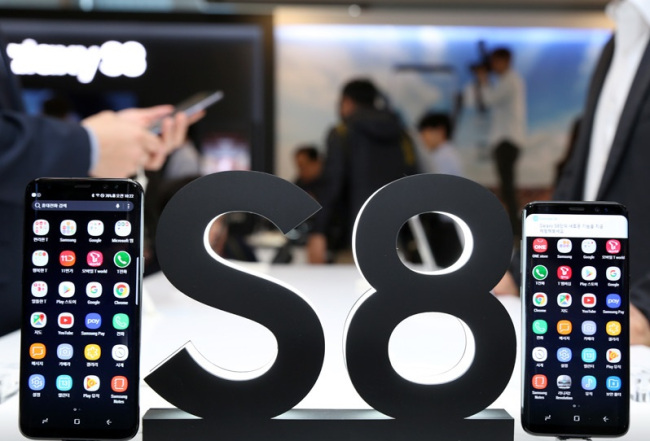Samsung
Supply bottleneck to drag on for flexible OLED panels
[THE INVESTOR] Despite extensive investment being made in plastic OLED (POLED) panels, a supply shortage for the flexible displays is likely to continue for at least the next couple of years, according to Chinese research firm Sigmaintell on Aug. 17.
“Chinese display makers are preparing to produce POLED panels from 2018, but it’s going to take around five years to stabilize production procedures and optimize yield rates to get ready for mass production. This means global supply is likely to stay put for the time being,” said Vicky Chen, an analyst from the Chinese research firm, in a news conference held in Seoul.
 |
POLED panels utilize plastic instead of glass, and are consequently much more malleable and bendable. Demand for the panels has grown significantly as they were adopted by major smartphone makers like Apple and Samsung Electronics.
Given the changing trends, display makers such as Samsung Display, LG Display, BOE, and Tianma have all been eagerly investing in OLED technology, including POLED. For the next three years, these firms are planning to spend a combined 600 billion yuan to build new display manufacturing lines in China -- a third of which is to be spent for the construction of POLED facilities, according to the research firm.
But because it will take longer for the mass-producing Chinese manufacturers to jump on the bandwagon, Samsung is likely to continue leading the segment, it predicted. Samsung Display has been dominating the global flexible OLED sector, supplying its panels to top smartphone makers including Apple, which plans to roll out the iPhone 8 this year that are fitted with flexible OLED-based edge-to-edge screens.
LG Display is also aiming to supply Apple with flexible OLED panels as early as next year for the iPhone 9. As Samsung’s biggest rival, LG Display recently announced a decision to spend 5 trillion won (US$4.4 billion) on beefing up production of POLED panels for the next three years.
Sigmaintell forecast that the move among smartphone makers to adopt full-screen OLED displays would bring breakthroughs in design and hardware, as manufacturers are pushed to come up with better ways to place fingerprint sensors.
The Chinese research firm also said an under-display fingerprint scanner, which enables fingerprint scanning at the bottom of the screen, will likely be introduced next year while an in-display fingerprint scanner, which allows users to scan their fingerprints anywhere on the screen, could be commercialized in 2019.
Of the 165 million smartphones expected to be shipped this year, 11 percent will come fitted with full-screen displays, Sigmaintell predicted, adding that the figure will grow to 80 percent by 2020.
By Kim Young-won (wone0102@heraldcorp.com)








